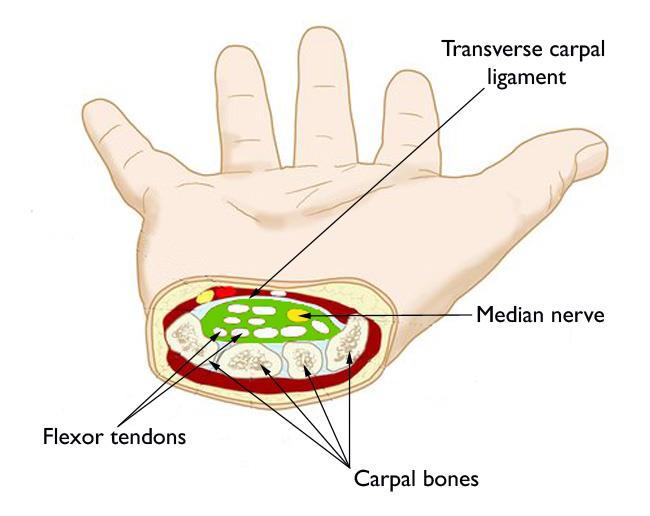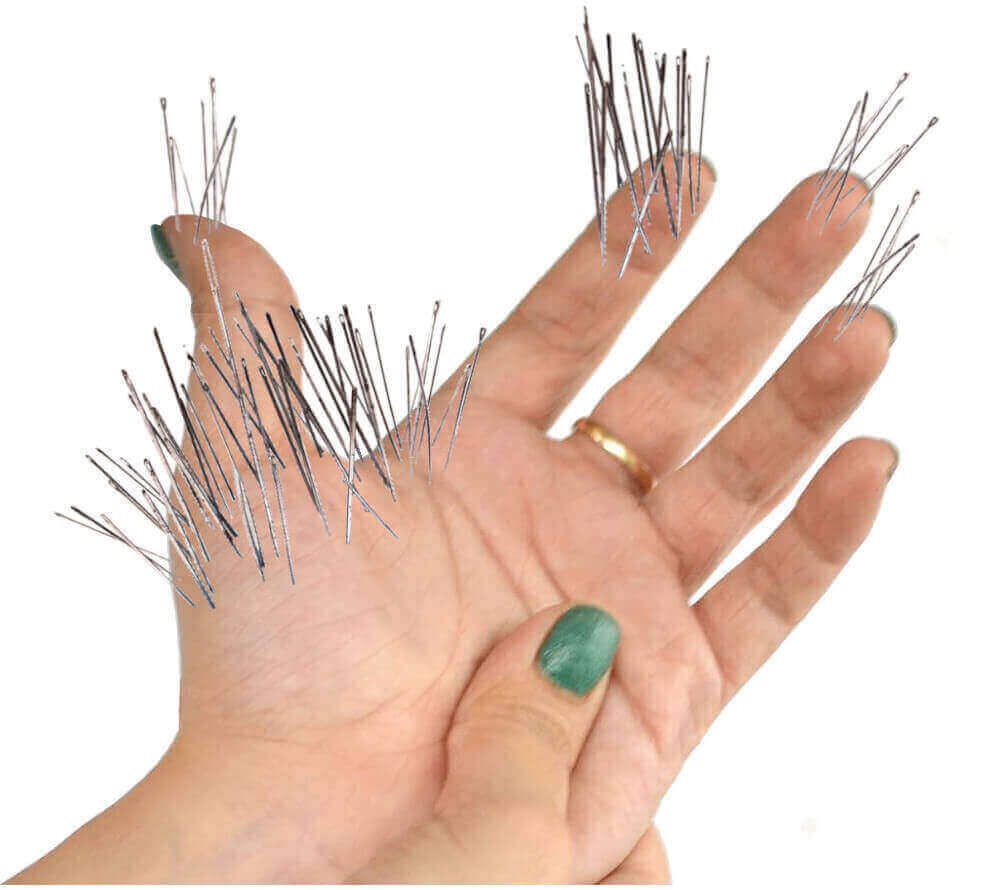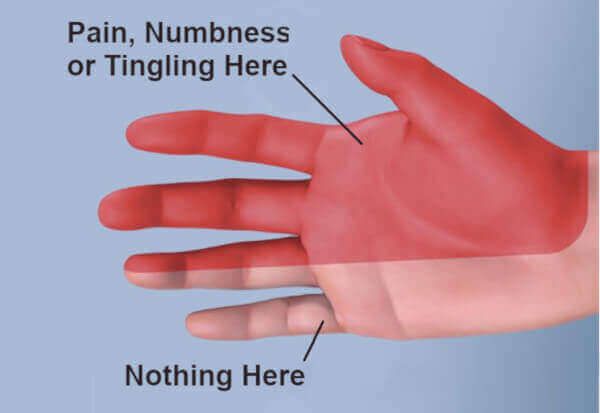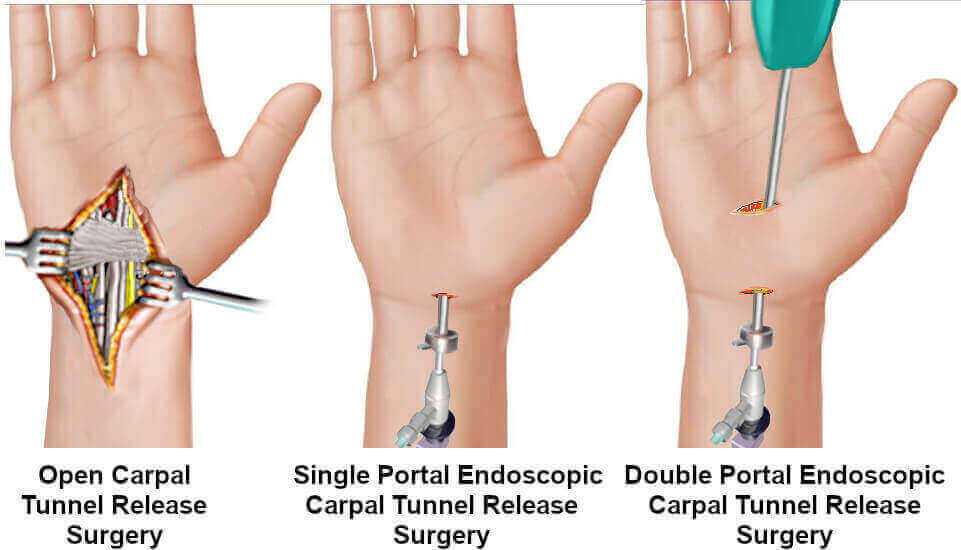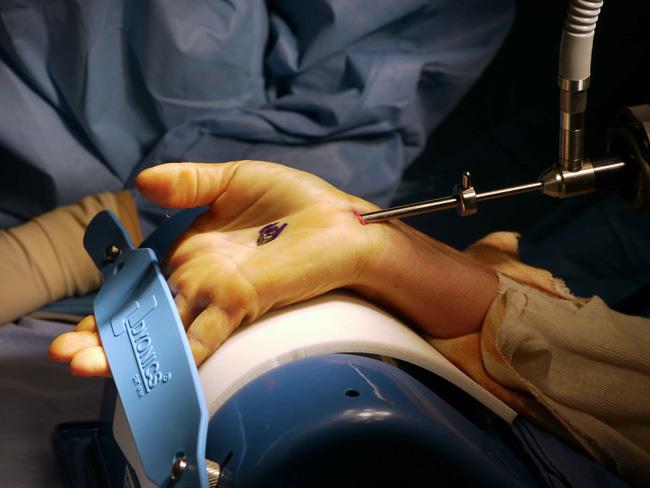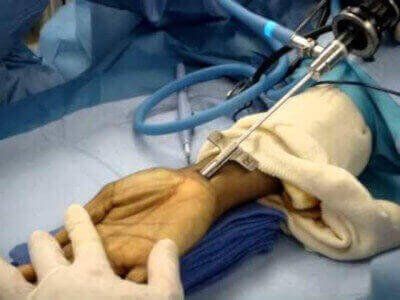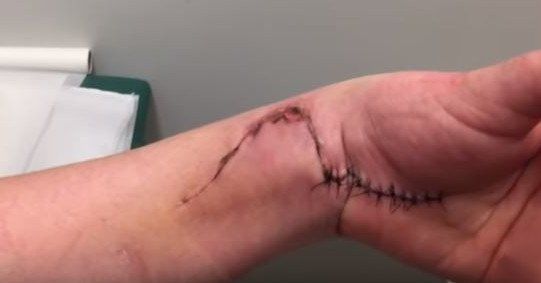Endoscopic Surgery for Carpal Tunnel
A
hand specialist will usually recommend endoscopic surgery for carpal tunnel syndrome if you meet the following 3 requirements.
- First, you must have
severe symptoms of this disorder. Having moderate (or just mildly annoying) symptoms are not enough to warrant hand surgery.
- Second, you must have symptoms for at least 6 months. But many surgeons say at least 12 months.
- Third, you have tried every
nonsurgical remedy, but each one failed.
Endoscopic surgery for carpal tunnel syndrome is the more up-to-date operative technique used in the United States. But it's not the only technique. In fact, the traditional technique called
open carpal tunnel release surgery is used
more often.
Carpal tunnel surgeries are performed over 250,000 times a year in the United States. That makes it one of the most common operations that surgeons perform. And the rate at which this procedure is performed each year is on a steep rise.
Different occupations, same problem
Current estimates are that
3-6% of the population in the United States has carpal tunnel syndrome. And the numbers continue to rise every year.
What's causing this?
Actually, no one knows for sure what causes this disorder or why it's on the increase. But many scientists attribute it to
repetitive stress activities. That means repetitively moving your fingers and hand forcefully, for long periods of time, to perform an activity.
When we look at the
jobs or hobbies most often associated with having carpal tunnel syndrome we can see distinct patterns. For instance, typing on a
keyboard, text messaging, using
hairdressing tools,
video game playing, and
playing the guitar all have one thing in common: moving the hand or fingers forcefully or making a tight grip for long periods of time.
These activities increase your risk of getting carpal tunnel syndrome due to repetitive stress. But there are other risk factors well-known to increase your chances of getting this condition. They include:
How carpal tunnel syndrome occurs
Carpal tunnel syndrome is a type of
neuropathy. That means a nerve is damaged. Some neuropathies are caused by disturbances in metabolism, like having diabetes.
But carpal tunnel syndrome is an
entrapment neuropathy. That means a nerve is physically trapped and crushed inside your wrist joint. All this happens inside a space called the
carpal tunnel (where the disorder gets its name).
The damaged nerve in this case is the
median nerve. This is one of the primary nerves of the hand. It's responsible for carrying sensations from your hand and fingers to your brain. These sensations include pain, temperature, touch, etc.
The carpal tunnel is a special anatomical passageway. It's where the median nerve and tendons are
packed tightly together. So as tendons swell, they push on the median nerve. With increasing swelling they eventually push so much that they crush the nerve, causing the neuropathy. As a result, you feel all the
symptoms of carpal tunnel syndrome in your hand and fingers.
Carpal tunnel symptoms
The abnormal neuropathy sensations caused by the trapped median nerve are well-known by
doctors. While they can vary from one person to another, they usually focus on the fingers (but not the little finger) and palm of the hand. The sensations you feel can be one more of the following:
One of the first
signs of carpal tunnel syndrome is when one or more of these sensations keeps you from getting a good night's sleep. As the condition worsens, symptoms will also appear during the day.
Symptoms almost always progressively worsen in intensity. Sometimes people feel pain or numbness radiate up to their elbow. Sometimes they feel shooting electric shocks from the fingers to the arm.
Doctors must be careful in diagnosing carpal tunnel syndrome. It mimics two other conditions, namely
tendonitis
and
thoracic outlet syndrome. Therefore, carpal tunnel syndrome is often
misdiagnosed as one of these disorders.
How carpal tunnel syndrome is treated
The idea behind any successful treatment for carpal tunnel is to relieve pressure on the crushed median nerve. Endoscopic surgery for carpal tunnel is just one way to do this.
The surgeon cuts a thick ligament (transverse carpal ligament) over the carpal tunnel space. Doing this allows the wrist bones to snap apart. As s result, more room is created for the median nerve, and it's no longer crushed.
But
open release carpal tunnel surgery achieves the same thing. The difference is that the open method
causes more trauma to the hand.
This is why surgeons believe endoscopic surgery for carpal tunnel syndrome is superior to the open release method.
It should be noted that certain
nonsurgical remedies also relieve pressure on the median nerve. Chief among these are carpal tunnel stretches and
myofascial release massage.
For the remainder of this discussion we will focus on endoscopic surgery for carpal tunnel syndrome.
Endoscopic surgery for carpal tunnel syndrome
Endoscopic surgery for carpal tunnel syndrome (technically called
endoscopic carpal tunnel release surgery) is the newest method to treat this disorder. While it's not yet as widely used as the open method, it's gaining popularity among doctors.
The reasons many surgeons still don't prefer doing this type of operation are two-fold:
- It requires special skill, specialized tools, and advanced training.
- This surgery is more prone to complications than the open technique.
The
big advantage over the open technique is that with endoscopic surgery for carpal tunnel there's
much less hand trauma. This translates into:
There are two basic types of endoscopic surgery for carpal tunnel syndrome. These are the:
- single portal technique, and
- double portal technique
The goal of each technique is identical. That is, to cut the transverse carpal ligament which holds the wrist bones tightly together. When the ligament is cut, the wrist bones snap apart. This releases the crushing pressure on the median nerve. And that's when symptoms resolve.
Double portal endoscopic surgery for carpal tunnel
Single portal endoscopic surgery for carpal tunnel
Benefits of endoscopic surgery for carpal tunnel syndrome
The benefits of endoscopic surgery for carpal tunnel syndrome are enough to warrant this procedure in lieu of the open technique. In general, the greatest benefit is that the operation produces
much less trauma to the hand as compared to the open method.
Either one or two small holes creates far less damage to
fascia, muscle and skin. These benefits result in:
- Less post-surgical pain
- Less loss of hand function
- Quicker physical therapy and hand rehabilitation
- Faster recovery time
Risks of endoscopic surgery for carpal tunnel syndrome
No operation is without risks, and carpal tunnel surgery is no exception. Any type of carpal tunnel surgery (open or endoscopic) poses risks or dangers you need to discuss with your doctor. These include the following:
- Reaction to anesthesia
- Unusual
postsurgical pain
- Infection
- Stiffness and decreased mobility
While the upside of having endoscopic surgery for carpal tunnel syndrome is significant, there are
possible complications. These can be severe, which is why many doctors still resist using this more advanced technique.
Each risk and complication is a result of the
smaller visual field it affords compared to the open technique. For instance, it could result in accidentally lacerating another important structure.
The specific risks and complications for either single or double portal endoscopic surgery for carpal tunnel syndrome are the same - and all result from accidental lacerations.
It's possible that the surgeon can
accidentally lacerate any one of the 3 types of structures below, with severe consequences.
Lacerating the median, ulnar and digital nerves
The median, ulnar and digital nerves lie close together. A nick or cut into one of these nerves can result in motor loss. This means loss of strength or overall weakness of the hand. It can also result in sensory loss. This can cause decreased feelings in the fingers or hand. Some feelings can become
hypersensitive, which is when touching something can cause pain or tingling.
Lacerating blood vessels
The area inside the carpal tunnel space is packed full of blood vessels. Some are major and some are minor. But if there is an accidental cut into one of these, it can result in varying degrees of problems. These include
necrosis (or tissue damage), pain, and decreased finger or wrist mobility.
Lacerating a tendon
More than any other structure inside the carpal tunnel space, tendons occupy most of the area. It's therefore easy to inadvertently lacerate one. If this occurs the result can be weakness in the finger controlled by that tendon. Also, the tendon can react by inflaming, further weakening the finger.
Summary
Doctors perform endoscopic surgery for carpal tunnel syndrome in one of two basic forms: the single portal or double portal technique. There are certain risks and benefits to both methods. However, both offer significant advantages over the open carpal tunnel release surgery method.




